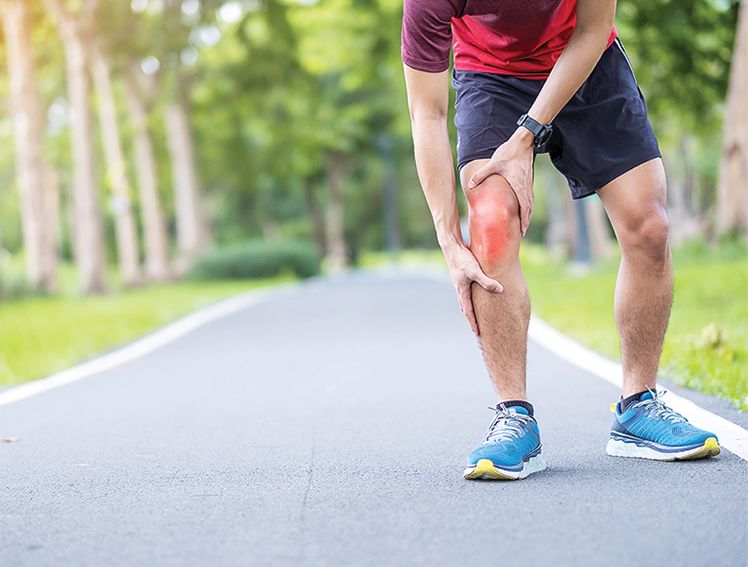
MISSO: The Surgical Assistant Robot that is a Cut Above
Introduction
As the global population ages, the prevalence of age-related conditions, particularly those affecting joint health and mobility, is on the rise. Osteoarthritis, one of the most common causes of joint degeneration, often necessitates joint replacement surgeries— especially as the condition worsens with age. Consequently, the demand for joint replacement procedures is surging worldwide.
India mirrors this global trend. According to Mr. Sanjeev Bhatt, Sr. Vice President, Corporate Strategy at Meril, “With an elderly population of close to 10% [of the total population in India], we have a large burden of joint replacement. Today, the country is pushing well towards half a million joint replacement procedures every year—still, for a country our size, this is vastly underserved. And in order to assist this surge in procedures, and make them more refined to increase throughput, we need robots.”
In response to this urgent need and the increased adoption of robotic systems in surgery worldwide, Meril launched its very own cutting-edge orthopedic robot, the MISSO Robotic System, on 15th June 2024. This technology is designed to assist surgeons in joint replacement procedures by providing personalized pre-operative planning and executing precise bone cuts, leading to consistent and improved surgery outcomes.
MISSO is not meant to replace surgeons—instead, it aims to enhance surgical efficiency, improve procedural accuracy, and ultimately extend high-quality orthopedic surgical care to a broader patient population that may have previously been underserved. In this article, we dive deeper into the unique features of MISSO and explore what makes it stand out in the Indian market, drawing insights from experts at Meril.
What sets the MISSO Robotic System apart from other surgical robots?
The MISSO Robotic System distinguishes itself through its best-in-class, state-of-the-art design, a hallmark of all Meril products. Its compact design minimises its footprint in the operating room, allowing for more space and flexibility during surgeries. The robotic arm operates with minimal noise, reducing distractions and enhancing the surgical environment. A standout feature of MISSO is its "Always On" capability, ensuring that the robot can continue its function even in the event of a power failure, providing unparalleled reliability during procedures.
Moreover, while most robotic systems depend on haptic feedback and oscillating saws guided by the surgeon for bone cutting, MISSO’s active robotic technology goes a step further. It offers real-time assistance to surgeons, allowing for highly precise cuts that can be completed in under 10 minutes. This reduces the need for traditional cutting guides and hence decreases the potential for human error.
How does MISSO benefit both the surgeon and the patient?
Bone dissections take up most of a surgeon’s time in traditional joint replacement surgeries—and especially in total knee replacement. Through MISSO, this task can now be supported with a precision robot.
MISSO uses data from the patient’s CT scan to generate an accurate 3D bone model, and create personalized surgical plans that are tailored to each patient’s unique anatomy—ensuring optimal alignment of the artificial joint components. This level of customization not only enhances the precision of the surgery but also contributes to faster patient recovery and improved long-term outcomes, adding quality years to patients' lives.
Surgeons can perform a virtual surgery on a 3D model of the patient bone and direct the robotic milling tool to perform bone dissections with sub-millimetric accuracy. By automating the labor-intensive aspects of joint replacement surgery, MISSO allows surgeons to concentrate on soft tissue management, which is crucial for minimizing tissue damage and improving post-operative recovery.
Are any artificial intelligence (AI) and machine learning (ML) technologies integrated into the MISSO system?
MISSO incorporates AI and ML technologies within its two key software components: the pre-planning module and the execution software. The pre-planning module utilises CT data to enable surgeons to perform a virtual surgery, creating a detailed surgical plan before the actual procedure.
In the next stage, the robot’s vision cart and execution software map the virtual knee precisely onto the real one. This process ensures that bone cutting is accurate, with a speed up/down feature that can be adjusted according to the surgeon’s requirements.
The execution software also offers real-time flexibility during surgery. Surgeons can modify the surgical plan on the fly, adjusting the size of the implant or refining other critical aspects as needed. This adaptability, guided by AI, ensures optimal implant placement, resulting in a more patient-centered approach to joint replacement surgeries.
How does MISSO integrate with existing hospital systems and workflows, and what support does Meril provide to ensure seamless integration?
To make sure MISSO fits right into a hospital’s existing setup, we ensure that a Meril expert is present on-site during installation. They stay on-site for a month to train the surgeons and help hospital staff get fully comfortable with the system.
We also provide continuous education programs along with training sessions and workshops for surgeons at Meril Academy.
Are there any future enhancements in the works for MISSO?
Currently, MISSO is being utilized for Total Knee Replacement surgeries only. We are incorporating updates and enhancements based on feedback and data from users. Plans are in progress to expand the system's capabilities to include unicompartmental knee replacements, along with hip, shoulder, spine, and arthroscopic surgeries.
Will MISSO be available only in India, or do you intend to expand to global markets?
Right now, MISSO is available only in India as we focus on sales, installations, and gathering clinical data. But with the global demand for robotic systems in joint replacement surgeries growing rapidly, we look forward to bringing our technology to the U.S., Europe, rest of Asia, and Middle East, once we have secured necessary approvals.
At the end of the day, MISSO represents more than just a technological advancement—it embodies a commitment to enhancing lives through better orthopaedic care. As Meril looks to the future, the goal is clear: to make joint replacement surgeries more accessible and effective, ensuring that patients everywhere can enjoy a healthier and more active life.



